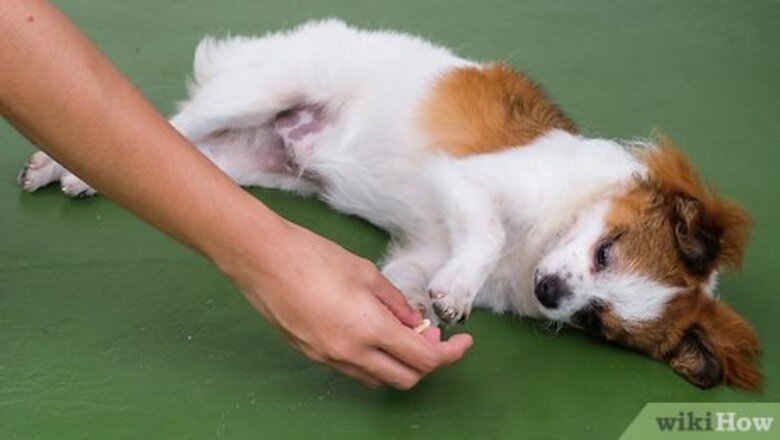
views
Setting Up for the Trick
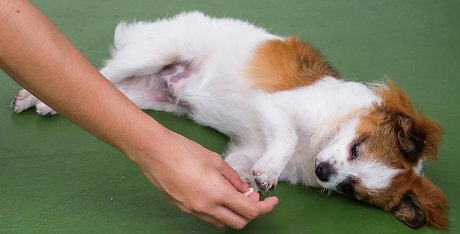
Make sure your dog knows how to lie down. This is an essential first step for completing the roll over trick, since the dog has to be lying down to perform it. If your dog doesn't respond to the "lie down" command, train him to do that first. You can also start by letting your dog lie on his side. This may help him initially learn to roll over.

Have some treats on hand. Give your dog treats that he does not normally get, like lean lunch meat (roast beef, ham, or turkey), cheese, store-bought dog treats, chicken, or another food your dog loves. Break the treats into small bites to make them last through the training session and keep your dog from filling up too fast. Keeping your dog hungry for treats will keep him motivated to learn to roll over. Avoid any high salt or fatty foods. If you'd rather not feed your dog treats, you can use verbal phrase. However, a more precise way to train is with a clicker and treats. You will need to train the clicker first. The clicker is useful because you can click at the exact second the dog modifies behavior. This is more precise than verbal praise or just giving treats. The dog associates the noise with a treat (which you will give to him/her a few seconds later). Clicker train your dog first and once your dog associates the noise as a reward, you can can start training your dog to roll over. Never use punishment as a way to train your dog. Dogs do not understand negative reinforcement and they won't learn new tricks as a result of it. In fact, negative tones or forcing your dog to perform tricks may cause your dog to associate the trick with feeling fear.
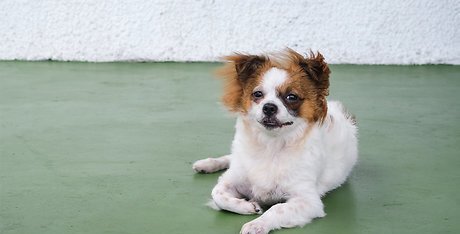
Move to a good training room. When you're training your dog, it's good to start in a room that's comfortable and free of most distractions. Choose a room with plenty of floor space, since the dog will be moving around quite a bit. Once your dog learns how to do the trick in the comfort of his home, he'll be able to do it outdoors or in public. Let other people in the house know what you're doing, so they won't distract the dog during the training session.
Teaching Your Dog to Roll Over
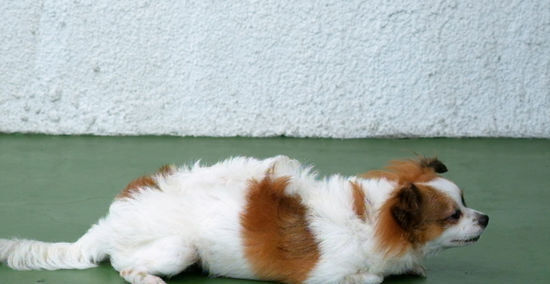
Give your dog the command to "lie down." Your dog should start the "roll over" trick in a lying down position, resting on his stomach with his paws in front of him and his head lifted. From this position, he'll be able to roll over easily and without hurting himself.
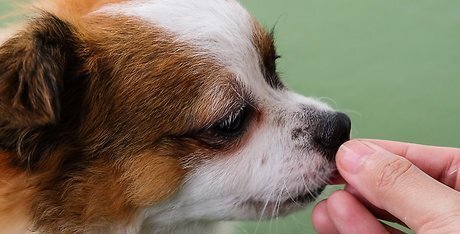
Hold a treat near the dog's face. Crouch down and hold a treat where the dog can see and smell it, close to his face. Close your fingers around the treat to make sure he can't snatch it from your hand before the trick is completed. If your dog tends to snatch treats quickly, make sure to watch your fingers so you don’t get bit.

Move the treat and say "roll over". Rotate the treat up and around your dog’s head so that his nose follows the treat. Where the nose goes, the head and body will usually follow. If you lead your dog’s nose with the treat along a path that will cause your dog to roll over as he follows it, your dog will roll over. Say "roll over" in a clear and friendly voice while you move the treat around the side of his head. The key is to get your dog to associate the spoken command with the physical move of rolling over. If you prefer, you can use a hand signal by making a rolling motion with your hand. Or you can give a verbal and physical signal simultaneously.
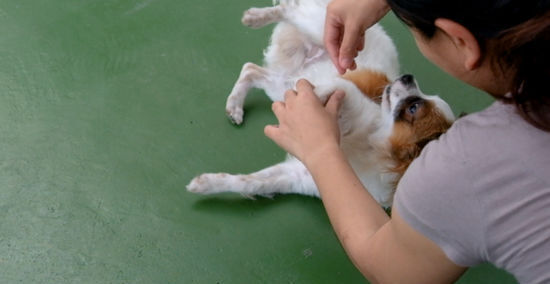
Help your dog and keep practicing. Use your free hand to gently help your dog roll over if he's not quite getting the move on his own. Practice the trick repeatedly because this can be a tricky move for a dog to make. As you practice, reward your dog with a treat as he makes moves in the right direction. This will encourage him to keep trying. Your dog might get frustrated if you wait to reward him until he rolls over completely. Don’t forget to praise your dog in a kind, excited voice. Dogs respond positively to an encouraging “good boy or good girl.”
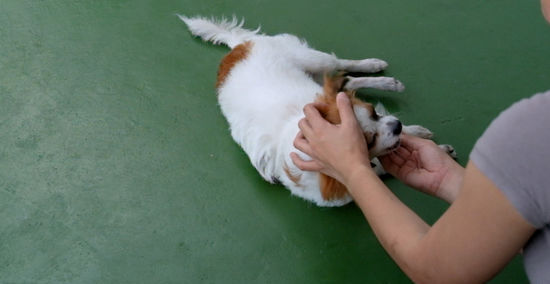
Know when to reward your dog. At first, reward your dog with a treat and praise every time he successfully rolls over. The repeated rewards will reinforce this new behavior. Once he knows what you expect, you can give treats less frequently. Reward your dog immediately, within seconds of the correct action. This will help your dog know what he is doing right so that he can repeat it.
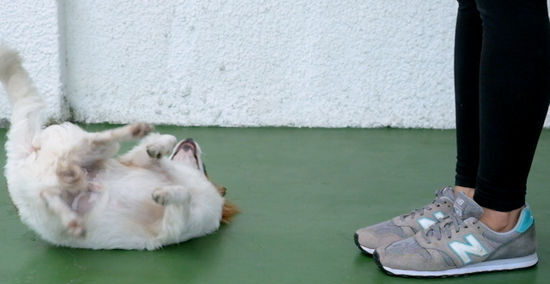
Keep practicing until he can do the trick without help. After the first few successes, the dog should be able to roll over without your help. You should no longer have to move the treat over his head or physically roll his body over. Stand up and tell him to roll over; when he does so on his own, reward him with a treat and a pat on the head.
Perfecting the Trick

Practice until the dog can roll over without needing a treat. Once your dog knows what you expect when you say “roll over,” change the way you treat your dog. Don't offer a treat every time. Slowly stretch out the time between treats and gradually give random or less appealing treats. This will keep your dog from expecting a treat every single time he rolls over. Keeping it unpredictable will also keep your dog interested in performing the trick. Continue rewarding with verbal praise (like "good boy") and affectionate petting. Save the special treats for the next trick you want to teach your dog and instead, give him less desirable treats, like store-bought treats or pieces of dog food.

Practice in new locations with distractions. At this point, you may want to introduce a new practice location. This will continue to challenge your dog and prevent him from only associating the new trick with the training room. Start practicing outside, first with a treat, then without. A dog park is a great place to practice, with lots of distractions. Your dog may be challenged by the new distractions. Be patient with him and reintroduce treats until he consistently rolls over in new locations.
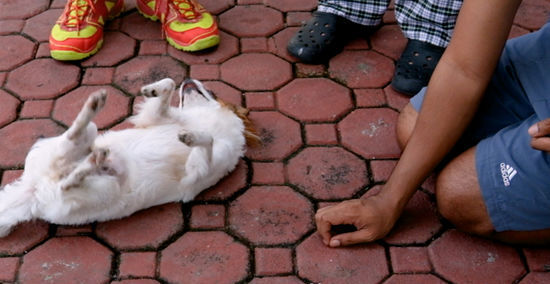
Move on to practicing around other people. Practicing in front of other people will let him get used to performing. The extra praise he'll get from other people will also encourage him to roll over. Try letting other people give him the "roll over" command. When your dog truly has the trick down pat, he might roll over when someone else gives him the command.



















Comments
0 comment